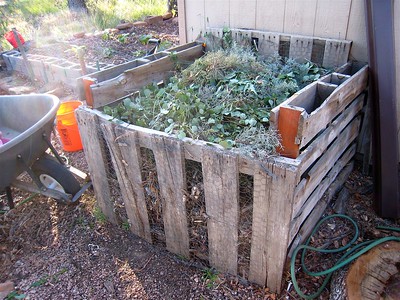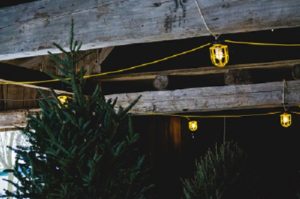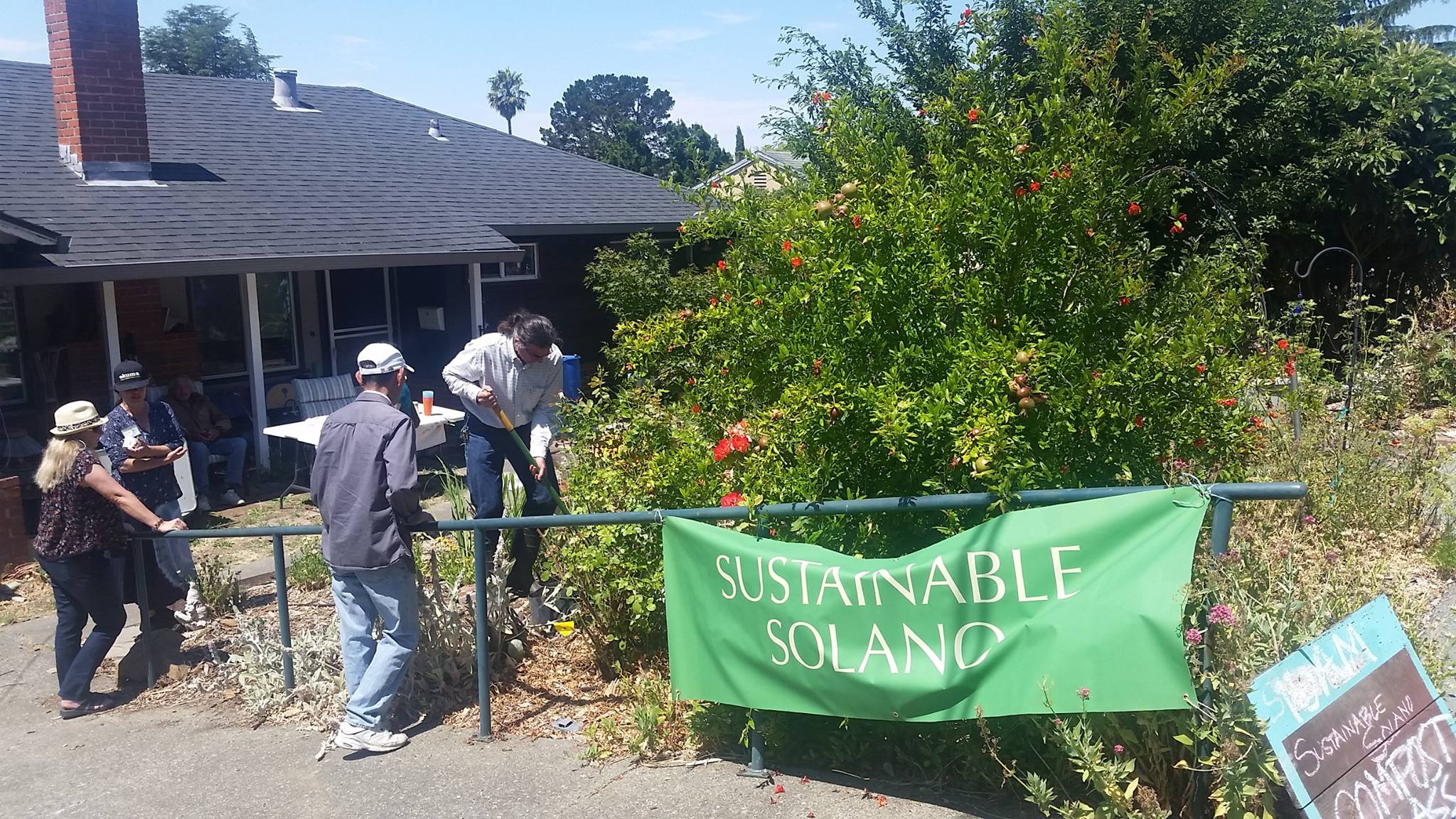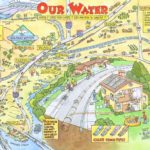Grow Your Gardens and Knowledge Through Our Compost Classes
By Jazzmin Ballou, Program Manager
Compost happens all around us in real time. We see leaves, branches, and fallen fruit decompose back into the soil. In the winter the Earth’s energy is focused on breaking down that which is no longer alive or of use to plants, so that in the spring our soil can be nutrient-rich, and ready to use those nutrients to support the biggest production season of the year.
 Soil health is a big focus for Sustainable Solano this year. This March through May, we’ll be offering classes for all levels of composting to build healthy soil. This series will consist of three classes, with a beginners composting class in March, an intermediate class in April and an advanced composting class in May. You are invited to attend the class of your choice or join us for all three to build your composting knowledge and connect with the different gardens where each class will be held.
Soil health is a big focus for Sustainable Solano this year. This March through May, we’ll be offering classes for all levels of composting to build healthy soil. This series will consist of three classes, with a beginners composting class in March, an intermediate class in April and an advanced composting class in May. You are invited to attend the class of your choice or join us for all three to build your composting knowledge and connect with the different gardens where each class will be held.
- March 16, 11 am-1 pm: Composting 101- A Beginners Guide to Composting
- April 13, 11 am-1 pm: Intermediate Compost Skills- An Introduction to Worm Composting
- May 25, 11 am-1 pm: Introduction to Advanced Composting Methods- Thermophilic Composting
Composting 101 – A Beginners Guide to Composting will be held at the Peace of Eden Community Garden at City Church in Fairfield. A brand-new three-bin system has just been built as an addition to this community garden, so this class is for folks who may want to compost but don’t know where to start. We’ll learn about composting basics: green waste vs. brown waste, what food scraps are compost-friendly and which aren’t, turning your pile, etc. Depending on time, we may weed or harvest from the garden so that participants can contribute to the compost bin. This class will be led by Lori Caldwell, who is not only a very experienced gardener and composter, but a very experienced teacher on those topics as well!
 Composting 101 will be followed by Intermediate Compost Skills – An Introduction to Worm Composting, also taught by Lori Caldwell. This class will go over compost mishaps and how to troubleshoot bin repair, pests, etc. The time will also be used to introduce worm composting, discussing the benefits of worms, worm castings, and this compost method that is very friendly for those who want to compost but have less space to work with. The Vallejo Project Unity Garden will be hosting this class, with a worm bin and a three-bin compost system that has been paused due to pest issues and repair needs. This class will be interactive and potentially hands on, as we hope to show examples of bin repairs and give their compost system a bit of TLC.
Composting 101 will be followed by Intermediate Compost Skills – An Introduction to Worm Composting, also taught by Lori Caldwell. This class will go over compost mishaps and how to troubleshoot bin repair, pests, etc. The time will also be used to introduce worm composting, discussing the benefits of worms, worm castings, and this compost method that is very friendly for those who want to compost but have less space to work with. The Vallejo Project Unity Garden will be hosting this class, with a worm bin and a three-bin compost system that has been paused due to pest issues and repair needs. This class will be interactive and potentially hands on, as we hope to show examples of bin repairs and give their compost system a bit of TLC.
Our final class of this series will be an Introduction to Advanced Composting Methods- Thermophilic Composting at the Vallejo People’s Garden on Mare Island. Michael Wedgley, owner of Soilogical, will teach this class, using his advanced understanding of soil biology to cover the thermophilic method of composting. As a more maintenance-intensive compost method, thermophilic composting creates an end product that is much higher in nutrients than traditional compost, as the goal is to heat up every inch of the organic matter being composted to a much higher temperature than we normally see for compost. This means it is turned much more intentionally and often, which is why after hosting this class, we will be offering opportunities for people to come back and support with the maintenance of this pile for the entire duration of time that it takes for it to break down (about six weeks).
We look forward to this ongoing process of learning about soil health and compost with you and encourage you to come ready to learn but also ready to teach! Every question asked, idea shared, comment made, in these open learning spaces feeds our own internal soils for when we are ready to harvest that knowledge and offer it back into the world, be that in our own backyard compost bins, or during a volunteer workday at a local community garden.




